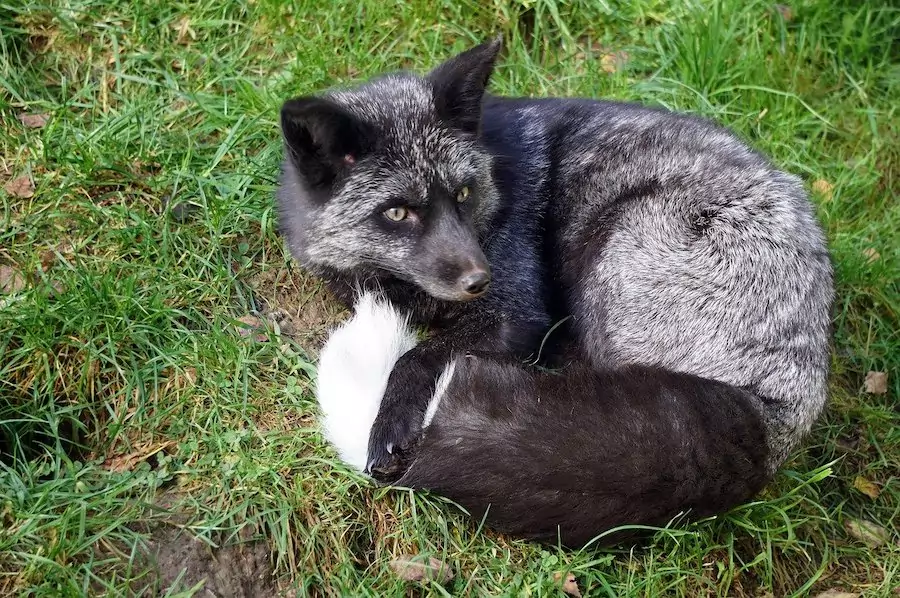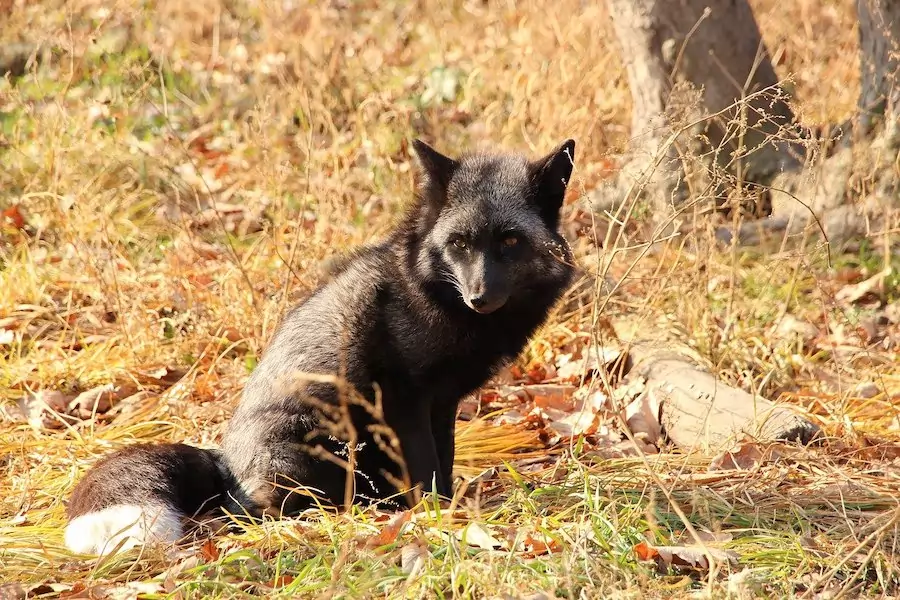We’ve written a lot about foxes of all types on Ranger Planet. So with this article, we’ve compiled an extensive list of gray fox facts that are both informative and amazing.
Some of these are about their behavior, others about mating and rearing, food, and their physical abilities that demonstrate just how adaptable this creature is to a variety of habitats.
Gray fox facts
Let’s get straight into the list of 40 gray fox facts…
1. Gray foxes are actually quite common throughout North America. They can also be found in Mexico and South America.
2. In terms of its location, the gray fox has the widest distribution of any wild canid ranging from southern Canada to southern Mexico.
3. The gray fox is named so because of its gray fur, which is often broken up by patches of white, brown, and black fur. They have fewer fur glands than most mammals and have many physical traits that help them remain largely scent-free.
4. They are part of the Canidae family, which includes wolves and coyotes. They are the only species of the Vulpes genus that lives in North America.
5. Gray foxes can survive in many different types of ecosystems. They are most commonly seen in deciduous forests, the trees help to provide cover at night to keep them safe from predators.

6. For their size, gray foxes have an impressive sense of sight and hearing.
7. The gray fox is very dexterous. They have evolved to climb trees, something that few other creatures of their size can do.
8. A gray fox has a long and slender body with a bushy tail that is almost as long as its body.
9. Most gray foxes will weigh between 8 and 18 pounds.
10. It has extremely strong legs and feet with large claws that allow it to grip things, climb trees and dig burrows.
11. Gray foxes typically live for 7–10 years in the wild but can live up to 15 years in captivity.
12. Adult gray foxes have gray fur on their backs and white underparts with dark spots on them. Newborn pups are also spotted, but they become less visible as they get older.
13. Being omnivores, gray foxes will eat a wide variety of foods, including meat and fruit; however, they favor rodents, rabbits, birds, and eggs. Check out our article on what foxes eat.

14. In addition to climbing trees or swimming to capture prey, gray foxes have been observed digging up rodents.
15. Gray foxes have two breeding periods each year, one in the spring and one in the fall. A male’s home range will overlap with many female home ranges.
16. When mating season arrives, gray foxes pair up and defend their territory from other gray foxes. This is to reduce the number of potential suitors and potential fights that may occur.
17. Gray foxes often communicate by marking their territory with scents, and by body language and postures. They also use urine to mark trails and territories.
18. Gray foxes also communicate through sound and smell and will growl and bark when they feel threatened or to warn their family of impending danger.
19. Liters of four to five kits are born in April or May.
20. Generally, males play no part in rearing the young. Gray foxes typically live with their parents until they reach sexual maturity, which is around 10 months in the wild.
Sometimes the females will stay and help raise the following year’s litter before moving on, and males even hang around or start their own families in close proximity to the family of origin.
21. Gray foxes tend to be quite friendly. They are playful, and the young ones play with one another. They are also often friendly with other animals, although not usually as sociable towards humans as dogs are. Gray foxes may still be observed in urban areas despite their shyness around people.
22. The gray fox also uses its tail as a blanket during cold weather.
23. The gray fox typically has a gray coat, however, their coats can alter in shade throughout the seasons. For example, in fall, they grow darker fur to protect them from the colder climate.
24. An adult gray fox can jump up to five and a half meters.

25. A short, thick, coarse coat allows gray foxes to blend into the forest floor as they forage for nuts, berries, insects, small reptiles, and rodents
26. The gray fox has been present throughout California’s northern Sierra Nevada during the late ice age, according to fossil fauna from two caves in the north of the state.
27. When cornered, gray foxes are known to become aggressive.
28. The gray fox also has the ability to swim when necessary.
29. Gray foxes can leave food sources for several days at a time, so they’re able to store their food in protected places or caches.
30. A gray fox is quite a formidable foe, they are capable of killing prey three times its size by biting on the prey’s throat. For capturing prey, they are very well adapted to an arboreal lifestyle with sharp, semi-retractable claws.
31. The gray fox often takes its food to the lower limbs of trees so it can feed while avoiding other predators who might either attack it or steal its food.
32. There are several places where gray foxes like to hide their food, these include rock piles and hollow logs.
33. Foxes aren’t always nocturnal, they’re able to function quite well during the day. For this reason, they are generally considered to be cathemeral.
34. The gray fox is not dangerous to humans unless it has rabies.
35. The gray fox has a longer ear canal than other species of foxes, and the shape of its skull is different too.
36. There are two subspecies that live in North America, these are the gray fox of the eastern United States and the gray fox of the west.
37. The gray fox is mainly solitary, however, it does sometimes live in small family groups of up to six individuals. These groups consist of parents and young family members from the previous year.
38. They are also known for their extreme curiosity, this trait has caused them to become endangered in some areas.
39. The gray fox has a very powerful sense of smell and can climb trees as well as run on the ground.
40. The only time they are likely to drink water is before eating white cedar berries; this allows them to swallow the toxic berries more easily.
More Gray Fox Help
That’s it, that’s our 40 quick gray fox facts!
We hope this has provided you with at least some gray fox facts that will stick in your memory, and perhaps some time you can use them to impress your friends and family with!
Be sure to check out other articles related to foxes, such as what do foxes eat… or the arctic fox diet. As well as finding out what eats foxes! Or maybe check out some other fox facts, like the red fox vs gray fox, or perhaps look at facts about fennec foxes.
